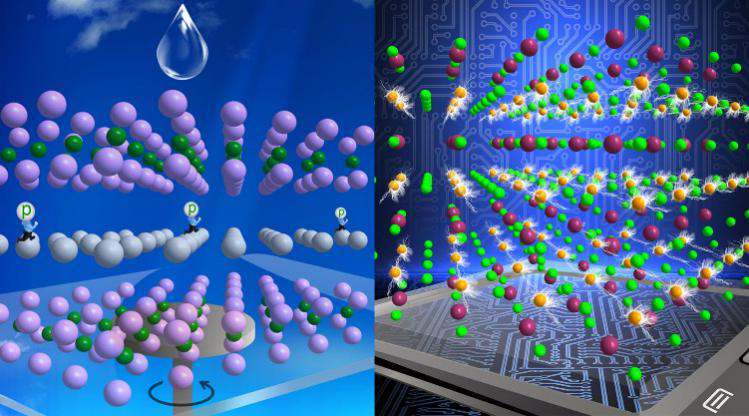Recently, Chinese scientists at Institute of Solid State Physics (ISSP), Hefei Institutes of Physical Science have developed several kinds of transparent conducting oxide (TCO) films.
Transparent conducting oxides (TCOs), combining two mutually exclusive properties of high optical transparency within the visible spectral region and good electrical conductivity, form the basis of numerous important applications including photovoltaics, flat-panel displays, and smart windows.
The current design approach for TCO is to degenerately dope wide bandgap (>3.1 eV) semiconductors to balance the trade-offs between transmittance and conductivity.
For n-type (electron-doped) TCOs, it is recently found that La-doped BaSnO3 thin films have wide bandgap and high carrier mobility, which can be regarded as the "next silicon".
ISSP researchers developed a facial and green chemical solution deposition to obtain La-doped BaSnO3 thin films with high carrier mobility.
Moreover, the thin film growth mechanisms for the solution-derived BaSnO3 thin films were also uncovered.
"The achievement of n-type BaSnO3 thin films with high mobility by such solution method will give a guidance for the fabrication of large-area touch screens", said Prof. ZHU Xuebin, a scientist with ISSP.
As compared with n-type TCOs, the counterpart p-type (hole-doped) TCOs are urgently needed, in order to exploit the entire new field of transparent electronics that requires both n- and p-type TCOs.
However, Ag-based delafossite with high optoelectronic performance has never been synthesized in an open system before.
ISSP researchers developed a new green and facial solution method to prepare AgCrO2 thin films under air conditions for the first time. Such a method opens a new window to synthesize Ag-based delafossites for the future.
Nevertheless, the strategy using the above conventional method to fabricate p-type TCOs still has some drawbacks such as the dopant solubility limitation, the carrier self-compensation (easily-formed donors neutralized holes) impede the further optoelectronic improvements.
Herein, ISSP researchers developed two kinds of high-performing p-type TCOs based on strongly correlated electronic oxides.
At first, they found that room temperature conductivity of p-type Bi2Sr2Co2Oy thin films can achieve 222 S/cm, while maintaining the visible transmittance over 50%.
On the other hand, a new p-type Sr-doped LaVO3 thin film was also prepared, and the good balance between electrical conductivity and optical transparency was achieved, which results in a record-high figure of merit showing the promise of this material.
These studies are sponsored by National Natural Science Foundation of China (Grant No. 11604337 and 11104273), National Key R&D Program of China (Grant No. 2017YFA0403600), Joint Funds of the National Natural Science Foundation of China and the Chinese Academy of Sciences’ Large-Scale Scientific Facility (Grant No. U1532149), Director’s Fund of Hefei Institutes of Physical Science (Grant No. YZJJ201513) and Nature Science Foundation of Anhui Province (Grant No. 1508085ME103).
Link to the papers: La2/3Sr1/3O3Thin Films: A New p-Type Transparent Conducting Oxide with Very High Figure of Merit

Conventional and unconventional strategies for designing transparent conducting oxide thin films (Image by WEI Renhuai)
Contact:
ZHOU Shu
Hefei Institutes of Physical Science (http://english.hf.cas.cn/)
Email: zhous@hfcas.ac.cn
 Tel: +86-551-65591206
Tel: +86-551-65591206
 Fax: +86-551-65591270
Fax: +86-551-65591270
 Emai: zhous@hfcas.ac.cn
Emai: zhous@hfcas.ac.cn
 350 Shushanhu Road
350 Shushanhu Road